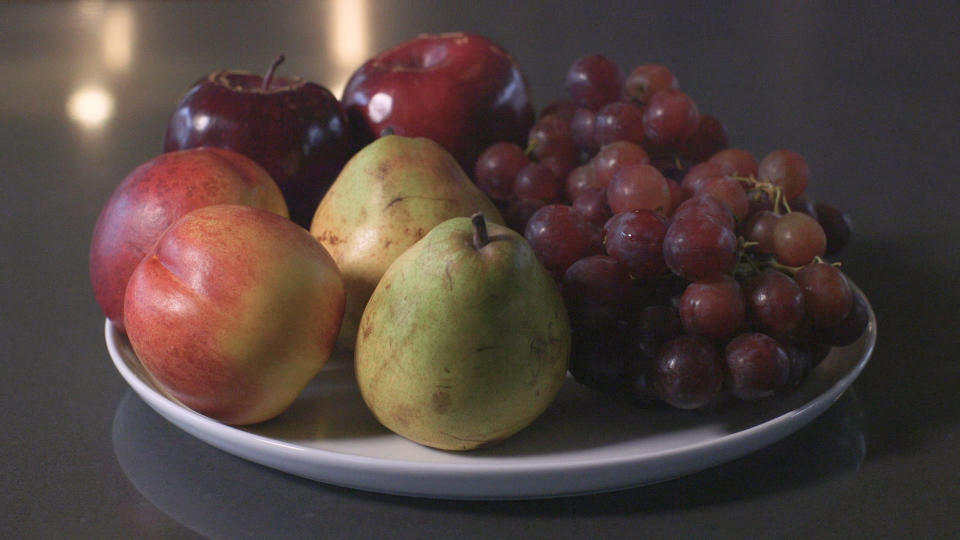Why Healthy Food Doesn't Have to Cost More

When shopping for groceries and trying to decide between two items—say, brands of granola bars—how do you determine which is healthier? A lot of us automatically assume that the more expensive product is healthier, according to a new study published in the Journal of Consumer Research.
The Ohio State University research, which was based on several experiments, found that the study volunteers attached more health value to foods they were told cost more money. They were also more likely to be skeptical of health claims they saw on the packages of cheaper items than on those of the more costly products.
According to Rebecca Reczek, Ph.D., an associate professor of marketing at Ohio State and one of the study’s authors, when we have little or no information about a product's nutritional value, we tend to rely on price as an indicator of its healthfulness. This may be in part because the notion that healthy foods are always more expensive appears to be widespread.
“If you Google ‘healthy foods expensive,’ you find an incredible amount of advice out there trying to tell you how to shop healthy on a budget—implying that it's actually very difficult,” Reczek says. But, reports Reczek, price doesn't necessarily correlate with nutritional value.
Doing a little fact-checking as you shop can help you choose what's good for both your health and your wallet. Here’s how.
6 Ways to Shop Smarter
1. Keep "healthy" in perspective. It’s true that in some cases, foods we may think of as healthier are costlier. For instance, organic foods are often more expensive than their nonorganic counterparts. It's important to know, however, that while organic food is guaranteed to be pesticide- and antibiotic-free, it isn’t generally considered to be nutritionally superior. And some healthy foods are notably inexpensive: whole grains, beans, and peanut butter, for instance, especially if you choose store brands.
2. Resist the allure of such claims as “healthy” and “natural.” Technically, if manufacturers want to use the term “healthy” on a product, it must meet certain Food and Drug Administration nutrition standards. For example, products that contain fats can have no more than 1 gram of saturated fats per serving. And foods that bear the claim must contain less than 480 milligrams of sodium per serving.
But Consumer Reports' nutrition experts say that those requirements exclude some important components of health; they make no mention of sugars, for instance. And the term “natural” isn’t regulated, so there’s no guarantee it means anything beneficial for your health.
3. Scan the nutrition panel on the back or side of the package. When you're looking for healthy foods, be on the lookout for products low in saturated and trans fats and sodium. You might also want to check for the daily values of nutrients such as vitamins A,C, D, calcium, iron, and potassium: 20 percent or more per serving means it’s a good source. Scan for fiber as well.
In addition, when you're looking for healthy foods, keep an eye out for those added sugars. For example, ingredients ending in “ose”—sucrose, fructose, and maltose—are just some of many names added sugars go by (see our full rundown here). And note that by 2018, the FDA will require nutrition labels to include the amount of added sugars.
And keep in mind that manufacturers sometimes use healthier-sounding terms for ingredients that aren't really any better for you. The sweetener agave nectar, for example, has all the same health drawbacks as regular sugar.
4. Shop for produce strategically. Stick to in-season fruits and veggies, which are generally cheaper and more flavorful than items that travel a long way to reach your store. If you’re craving blueberries in January or butternut squash in summer, however, head to the freezer case. Frozen produce is usually just as nutritious as fresh.
Skip precut or sliced items, which can carry a premium price but offer no nutritional boost. And embrace ugly produce. Some supermarkets put slightly bruised or oddly shaped fruits and veggies on discount.
5. Toss out less of what you buy. On average, a family of four wastes up to $1,500 worth of food each year. Making better use of your freezer can help. Buy fresh produce in season and freeze some for use later. Overripe fruit that’s frozen, for example, can be added to smoothies, breads, jams, or sauces when the need arises, and veggies can be tossed into soups and casseroles.
Freeze leftovers you don’t use within a couple of days so you don’t end up having to throw them out. And try to plan meals for the week, so you’re less likely to buy on impulse when food shopping.
6. Opt for fewer ingredients. It’s often healthier to lean toward whole foods—fresh fruits and vegetables, whole grains, and lean proteins—rather than packaged, more processed items. And when you’re buying boxed or canned foods, Consumer Reports’ nutrition experts advise that you choose those with shorter ingredient lists. That gives you more control over what you're eating.
More from Consumer Reports:
Top pick tires for 2016
Best used cars for $25,000 and less
7 best mattresses for couples
Consumer Reports has no relationship with any advertisers on this website. Copyright © 2006-2017 Consumer Reports, Inc.

 Yahoo Finance
Yahoo Finance 